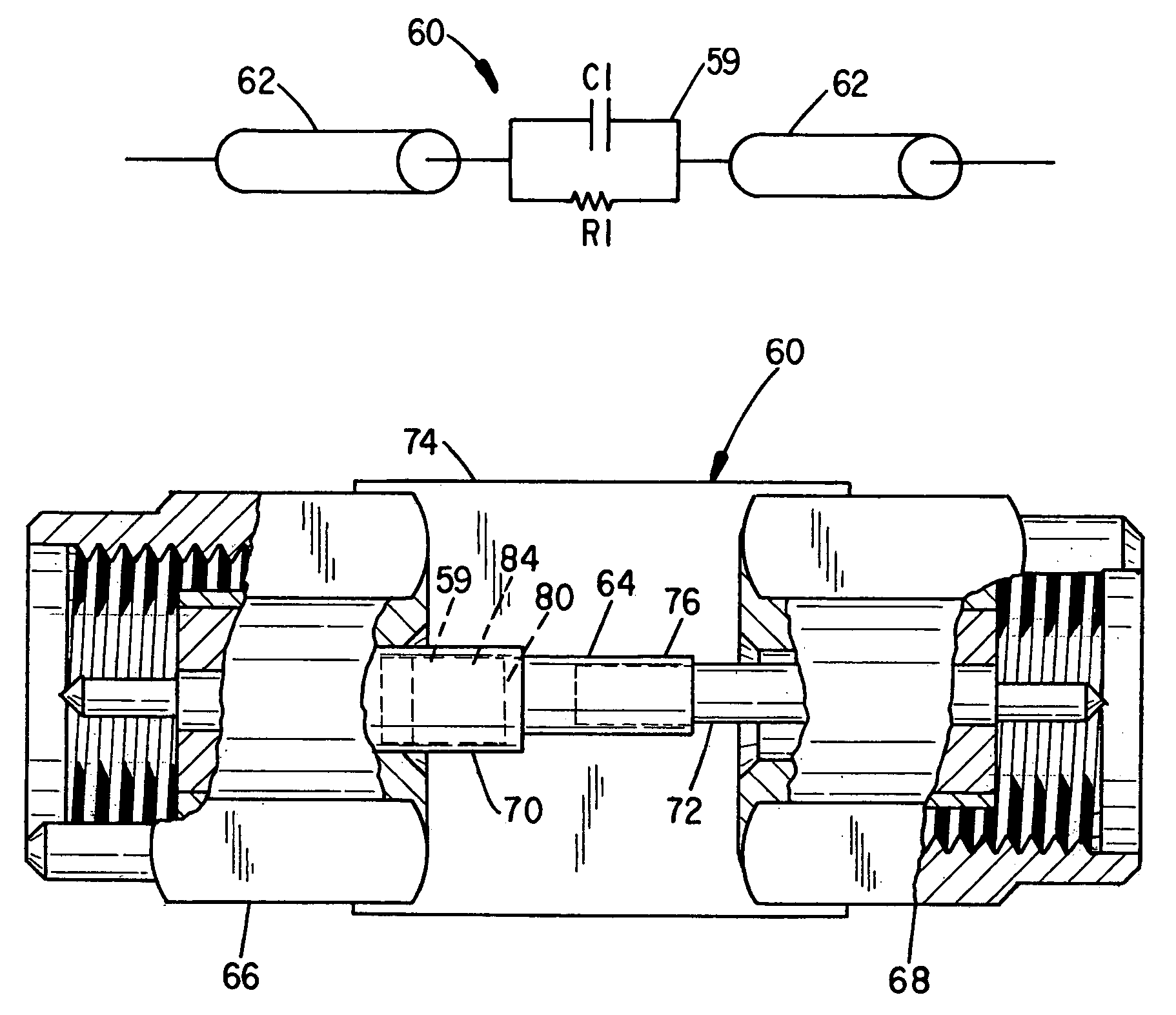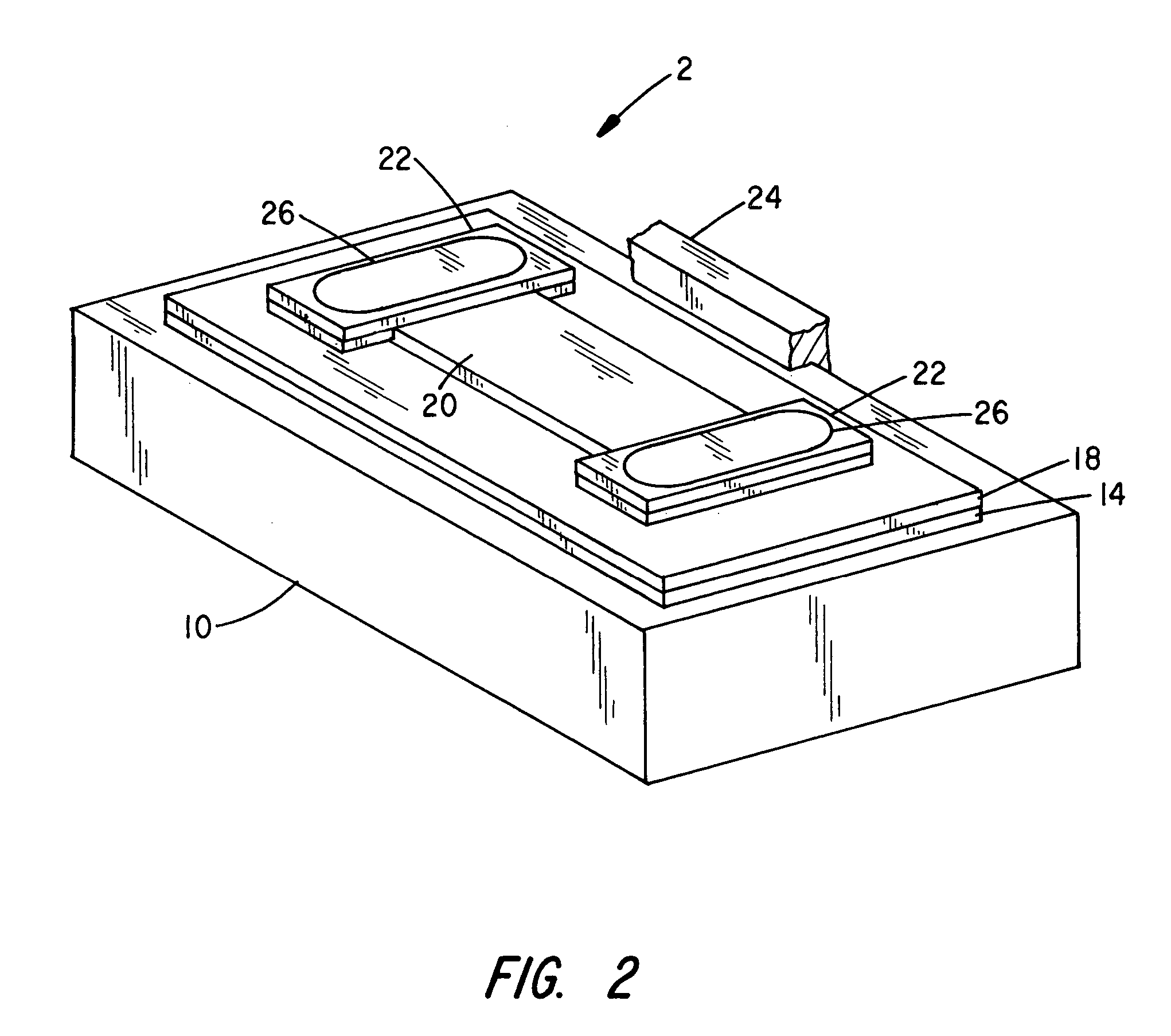Impedance qualization module
a technology of qualization module and qualization module, which is applied in the direction of electrical apparatus construction details, fixed capacitor details, coupling device connections, etc., can solve the problems of reducing bandwidth and more hardware, reducing performance, and affecting the operation of high-frequency digital circuits
- Summary
- Abstract
- Description
- Claims
- Application Information
AI Technical Summary
Benefits of technology
Problems solved by technology
Method used
Image
Examples
Embodiment Construction
[0041]Referring to FIGS. 1–4, views are shown to a passive thin film equalizer device 2. The device 2 can be coupled to conductors conveying signals at frequencies in excess of 1.0 GHZ to reduce conductor losses and improve signal integrity. The device 2 is typically constructed to condition a specific length of conductor. Longer conductors can be conditioned with several displace, serially arranged devices.
[0042]With attention to FIG. 1, the device 2 includes a capacitor element C1 and resistor element R1 that are coupled in parallel relative to input and output ports P1 and P2. The device 2 is typically coupled in series with a conductive path that is being conditioned, for example a printed circuit trace conductor or transmission line. The ports P1 and P2 can be coupled at any convenient location along the conductive path, including printed circuit terminations, such as in associated connectors.
[0043]Depending upon the length of the lossy conductor, the values of R1 and C1 can be...
PUM
 Login to View More
Login to View More Abstract
Description
Claims
Application Information
 Login to View More
Login to View More - R&D
- Intellectual Property
- Life Sciences
- Materials
- Tech Scout
- Unparalleled Data Quality
- Higher Quality Content
- 60% Fewer Hallucinations
Browse by: Latest US Patents, China's latest patents, Technical Efficacy Thesaurus, Application Domain, Technology Topic, Popular Technical Reports.
© 2025 PatSnap. All rights reserved.Legal|Privacy policy|Modern Slavery Act Transparency Statement|Sitemap|About US| Contact US: help@patsnap.com



